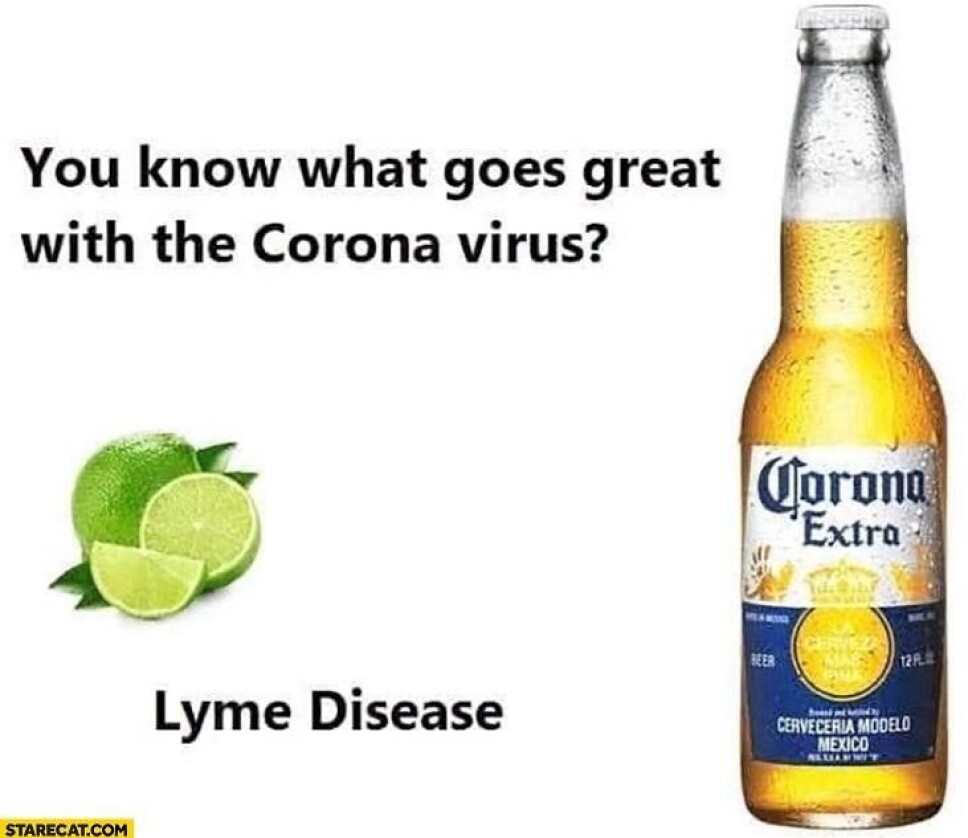Researchers' Zone:

What’s funny about coronavirus?
The internet abounds with corona jokes. But why are we laughing at something gravely serious?
'Don't worry, the corona virus won't last long - it's made in China...'
Alongside health recommendations and advice on how to reduce the risk of infection, the internet abounds right now with corona jokes and humorous memes.
The focal point of the jokes is typically the sometimes drastic measures that people use to stay corona-free, as well as people's behaviour in the crisis.
But why, really, make fun of a disease that has become very serious and brought the world to its knees?
How does humour help when we face something alien to us in an uncertain time?
This is what we will take a closer look at in this article.
Laughter as relief
One theory of humour that can shed light on corona jokes is relief theory.
This is one of the three dominant theories in humour research that explain what arouses laughter (the other two theories are superiority theory and incongruity theory).
Relief theory interprets laughter as a kind of release of nervous energy, and the first to articulate the theory was the British philosopher Herbert Spencer in the 19th century.
He examined laughter from a physiological perspective and argued that laughter is a way of releasing the nervous energy that builds up in our nervous system.
Laughter lightens the atmosphere
However, the theory is associated with Sigmund Freud in particular, who, in 1905, wrote 'Der Witz Und Seine Beziehung Zum Unbewussten ('Jokes and their Relation to the Unconscious').
In 'Der Witz', Freud applies the same psychoanalytic concepts to jokes that he used in his work on dreams. The book presents a psychological theory of why and how the unconscious rebels against social norms and codes through jokes.
Just as in dreams, jokes are an outlet for unconscious, repressed and 'forbidden' feelings, such as desire, phobia or fear of the strange, and the laughter acts as a valve to relieve us of what inhibits us.
In other words, jokes – or humour to use a more general term – enable us to deal with difficult things in an indirect way and talk about things that we normally feel unable to.
By joking about coronavirus, we therefore break through a little of the seriousness of the situation and thus ease some of the nervousness that might otherwise stick to us and nag away somewhere inside – consciously or unconsciously.
Toilet paper, Mexican beer and John Travolta
Let us look at some examples of corona humour:
»John Travolta has just been tested negative for corona virus last night. Turns out it was just Saturday night fever...« Here there is a reference to Travolta’s hit film of the same name.
Many jokes and humorous memes also play on the name ‘corona’, which the virus shares with a Mexican beer enjoyed with a slice of lemon or lime, to which this image alludes:

The way people protect themselves from the virus is also the focal point for many jokes. Here, for example, is a suggestion of how to protect yourself if face masks are sold out:

In the same vein, another meme shows a man wearing a sanitary towel, presumably in the absence of a real mask!
As a kind of secondary joke of the corona crisis, many jokes refer to the hoarding of toilet paper. Here, the humour acts more like a corrective: people's panicked purchases, driven by the fear of running out of toilet paper, are portrayed as foolish. It implies that this is an irrational act that should be reprimanded satirically.
Panic Forting.#toiletpaper #coronavirusaus #COVID19 #auspol
— Glen Le Lievre (@GlenLeLievre) March 6, 2020
More cartoons, gifs and behind the scenes videos athttps://t.co/L3EUxCaus8 pic.twitter.com/2iaHaxAHd9
Toilet paper has proven to be one of our most treasured products. (Illustration: Glen Le Lievre)
Humour connects us to the present – and to each other
In addition to providing an outlet for nervousness, another explanation for the many corona jokes in circulation may be that humour connects us to the present: we joke about what is happening here and now that we all experience or know about.
Stand-up comedians typically extract humour out of small, everyday situations that most people recognise while still managing to surprise us by turning the situation on its head and doing something a little different from what we expect.
Right now, the corona situation has become our everyday situation, so it is not particularly strange that we have subjected it to humour. Here, humour forms a community; when we laugh at the same thing, we affirm each other in a shared experience of a situation.
The American rhetoric researcher John C. Meyer makes the pretty obvious point that one of humour’s most central functions in communication is a unifying one that he calls 'identification'.
When we laugh together – or if as a speaker you allow others to laugh at you through the use of self-irony – it is easier for us to identify with each other. This is especially pertinent in times of crisis, where we need to feel that we are not alone and can share our concerns with others.
The unifying function of humour can therefore also have a major impact on our ability to handle life when things become difficult.
Tragedy and comedy are rarely far apart
'If it wasn't all so sad, you would simply die with laughter.'
So says one of the cartoon flies drawn by the Danish humourist, writer and painter Storm P. The words encapsulate something very central: that the distance between humour and gravity is not as great as one might think.
Life offers a whole host of unexpected situations that throw us off balance, and sometimes it can be difficult to know whether to laugh or cry. Or maybe both.
A lot of comedy is based on something going wrong – just look at old Charlie Chaplin films or today's YouTube ‘funny fails’ videos. They all have incidents that are so absurd they make us laugh.
Many might argue that the corona crisis is absurd in many ways, but because it involves real circumstances with serious consequences, there is less to laugh about.
The line between something being comic or tragic, between that which makes us laugh or cry, is extremely fine and fluid. What was funny last week may not be anymore; but, thankfully, it might become funny again.
So perhaps, in Storm P.'s words, we can gently encourage ourselves to not take life too seriously. Because even when life looks gravest, in the next moment we might find something to laugh about. Let's hope so.
Translated by Stuart Pethick, e-sp.dk translation services. Read this article in Danish at Videnskab.dk's Forskerzonen.
References
Mette Møller’s profile (own website)
Mette Møller’s profile (LinkedIn)
'The book 'Jokes and Their Relation to the Unconscious'
'The Philosophy of Laughter and Humor'. State University of New York Press, 1986.
———







